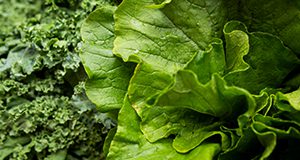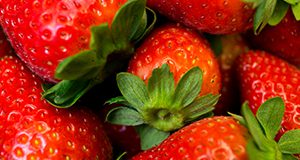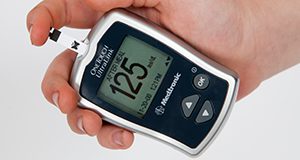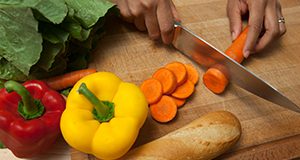Planear sus comidas puede ayudar a controlar las porciones y la cantidad de carbohidratos que usted consume a través del día. Esto es especialmente importante si usted padece de la diabetes o si usted es una persona en alto riesgo de padecer de la diabetes. This 2-page document is the Spanish version of Healthy Eating: Create Your Plate. Written by Jennifer Hillan and Linda B. Bobroff, and published by the UF/IFAS Department of Family, Youth and Community Sciences, revised December 2018.
http://edis.ifas.ufl.edu/fy907
Tag: Jennifer Hillan
Alimentacion Saludable: Bebidas saludables
Los batidos son una manera deliciosa de incorporar más frutas y nutrientes a su dieta. This 2-page fact sheet provides tasty recipes for shakes and smoothies. It is the Spanish version of Healthy Eating: Drink to Your Health. Written by Jennifer Hillan, Emily Minton, and Linda B. Bobroff, and published by the UF/IFAS Department of Family, Youth and Community Sciences, revised September 2018.
http://edis.ifas.ufl.edu/fy697
Alimentacion saludable: Guia de almacenamiento de alimentos
Si usted no compra alimentos a menudo, probablemente debería comprar alimentos que duren hasta su próxima visita a la tienda. Para ayudarle a aprender que tanto comprar, aquí tenemos algunas guías para almacenar alimentos perecederos. This 2-page fact sheet is a major revision that provides food storage tips. Written by Jennifer Hillan and Linda B. Bobroff, and published by the UF/IFAS Department of Family, Youth and Community Sciences, revised July 2018.
https://edis.ifas.ufl.edu/fy700
Healthy Living: Diabetes Care During Sick Days
When you are sick, your blood glucose levels are harder to regulate. Being sick often causes blood glucose levels to rise, which can lead to serious health conditions. It is important to have a plan to manage your sick days so you are prepared ahead of time. This 3-page fact sheet is a major revision that provides information on the ways illness can affect blood glucose, suggestions for easy foods to have on hand, and a checklist to use when deciding whether a call to a doctor is in order. Written by Jennifer Hillan, Emily Minton, and Linda B. Bobroff, and published by the UF/IFAS Department of Family, Youth and Community Sciences, revised February 2018.
http://edis.ifas.ufl.edu/fy884
Seguridad Alimentaria: Juegatela seguro con los huevos
Los huevos frescos pueden contener bacterias que podrían causar una enfermedad llamada salmonelosis. Esta enfermedad causada por alimentos provoca vómito y diarrea. Esta puede ser severa y hasta podría ser fatal para los adultos de mayor edad. Reduzca el riesgo de contraer esta enfermedad al seguir estas pautas. Written by Linda B. Bobroff and Jennifer Hillan, and published by the UF/IFAS Department of Family, Youth and Community Sciences, revised February 2018.
http://edis.ifas.ufl.edu/fy194
Seguridad Alimentaria: Su cocina pasa la prueba?
Los adultos mayores corren un mayor riesgo de contraer enfermedades transmitidas por alimentos. Para ayudar a reducir el riesgo, es importante tener prácticas de manipulación de alimentos sanas. Cómo se compara su cocina? Written by Jennifer Hillan and Linda B. Bobroff, and published by the UF/IFAS Department of Family, Youth and Community Sciences, revised January 2018.
http://edis.ifas.ufl.edu/fy1163
Healthy Eating: Drink to Your Health
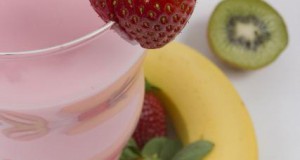
Shakes and smoothies are a great and delicious way to incorporate more fruits and nutrients into your diet. This 2-page fact sheet is a major revision which provides a variety of refreshing and exciting smoothie and shake recipes as well as preparation tips. Written by Jennifer Hillan, Emily Minton, and Linda B. Bobroff, and published by the UF Department of Family, Youth and Community Sciences. Original publication date: March 2004. Revised March 2012 and September 2015.
http://edis.ifas.ufl.edu/fy696
Seguridad Alimentaria: Crucigrama de alimentos do alto riesgo
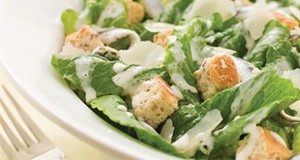 Algunos alimentos pueden causar más enfermedades alimentarias que otros. La leche ó jugos no pasteurizados no son seguros para consumir. Alimentos que no han sido cocinados, como lo son los huevos crudos ó a medio cocinar son particularmente riesgosos.
Algunos alimentos pueden causar más enfermedades alimentarias que otros. La leche ó jugos no pasteurizados no son seguros para consumir. Alimentos que no han sido cocinados, como lo son los huevos crudos ó a medio cocinar son particularmente riesgosos.
This 2-page fact sheet is the Spanish language version of Food Safety: High-Risk Foods Crossword. Written by Jennifer Hillan and Linda B. Bobroff, and published by the UF Department of Family Youth and Community Sciences, June 2015. (Photo Credit: Catherine Yeulet/iStock/Thinkstock)
http://edis.ifas.ufl.edu/fy1170
Vida Saludable: Examinando el nivel de glucosa en la sangre
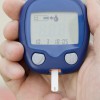 Examinar el nivel de glucosa en su sangre es una parte importante en el manejo de la diabetes. El conocer los valores de glucosa en su sangre le indica que tan eficiente está funcionando su plan de cuidado y si debe hacer algún cambio. ¡Continúe leyendo para aprender más!
Examinar el nivel de glucosa en su sangre es una parte importante en el manejo de la diabetes. El conocer los valores de glucosa en su sangre le indica que tan eficiente está funcionando su plan de cuidado y si debe hacer algún cambio. ¡Continúe leyendo para aprender más!
This 4-page fact sheet is the Spanish language version of Healthy Living: Checking Blood Glucose. Written by Jennifer Hillan and Linda B. Bobroff, and published by the UF Department of Family Youth and Community Sciences, January 2015. (Photo: iStock/Thinkstock.com)
http://edis.ifas.ufl.edu/fy908
Healthy Eating: Nutrition and Diabetes
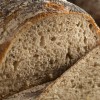 A healthy diet, along with exercise and medication, can help control diabetes and reduce the risk of complications. A healthy lifestyle also helps reduce the chances of developing diabetes for those who are at high risk. For a healthy diet, follow these tips. This 3-page fact sheet was written by Linda B. Bobroff, Jennifer Hillan, and Emily Minton, and published by the UF Department of Family Youth and Community Sciences, February 2015. (Photo:iStock/Thinkstock.com)
A healthy diet, along with exercise and medication, can help control diabetes and reduce the risk of complications. A healthy lifestyle also helps reduce the chances of developing diabetes for those who are at high risk. For a healthy diet, follow these tips. This 3-page fact sheet was written by Linda B. Bobroff, Jennifer Hillan, and Emily Minton, and published by the UF Department of Family Youth and Community Sciences, February 2015. (Photo:iStock/Thinkstock.com)
http://edis.ifas.ufl.edu/fy685
Alimentacion Saludable: Nutricion y diabetes
 Una dieta saludable, junto con ejercicio y medicinas, pueden ayudar a controlar la diabetes y reducir el riesgo de complicaciones. Un estilo de vida saludable también ayuda a personas con alto riesgo de diabetes a reducir las probabilidades de padecer de esta enfermedad. Para una dieta saludable, siga estos consejos. This 3-page fact sheet was written by Linda B. Bobroff, Jennifer Hillan, y Emily Minton, and published by the UF Department of Family Youth and Community Sciences, February 2015.
Una dieta saludable, junto con ejercicio y medicinas, pueden ayudar a controlar la diabetes y reducir el riesgo de complicaciones. Un estilo de vida saludable también ayuda a personas con alto riesgo de diabetes a reducir las probabilidades de padecer de esta enfermedad. Para una dieta saludable, siga estos consejos. This 3-page fact sheet was written by Linda B. Bobroff, Jennifer Hillan, y Emily Minton, and published by the UF Department of Family Youth and Community Sciences, February 2015.
http://edis.ifas.ufl.edu/fy665
Healthy Living: Checking Blood Glucose
 Checking your blood glucose levels is an important part of managing diabetes. Your blood glucose values let you know how well your care plan is working and if you need to make any changes. This 3-page fact sheet was written by Jennifer Hillan and Linda B. Bobroff, and published by the UF Department of Family Youth and Community Sciences, February 2015.(Photo iStock/Thinkstock.com)
Checking your blood glucose levels is an important part of managing diabetes. Your blood glucose values let you know how well your care plan is working and if you need to make any changes. This 3-page fact sheet was written by Jennifer Hillan and Linda B. Bobroff, and published by the UF Department of Family Youth and Community Sciences, February 2015.(Photo iStock/Thinkstock.com)
http://edis.ifas.ufl.edu/fy868
Seguridad Alimentaria: ¿Su cocina pasa la prueba?
 Los adultos mayores corren un riesgo mayor de contraer enfermedades por alimentos. Para ayudar a reducir el riesgo, es importante tener prácticas de manipulación de alimentos sanas. ¿Cómo se mide su cocina?
Los adultos mayores corren un riesgo mayor de contraer enfermedades por alimentos. Para ayudar a reducir el riesgo, es importante tener prácticas de manipulación de alimentos sanas. ¿Cómo se mide su cocina?
This 2-page fact sheet is the Spanish language version of Food Safety: Does Your Kitchen Pass the Test?, written by Jennifer Hillan and Linda B. Bobroff, and published by the UF Department of Family Youth and Community Sciences, December 2014.
http://edis.ifas.ufl.edu/fy1163
Food Safety: High Risk Foods Crossword
 Some foods are more likely to cause foodborne illness than others. Unpasteurized milk or juices are not safe to consume. Uncooked foods that are made with raw or undercooked eggs are especially risky. This 2-page fact sheet was written by Linda B. Bobroff and Jennifer Hillan, and published by the UF Department of Family Youth and Community Sciences, February 2014.
Some foods are more likely to cause foodborne illness than others. Unpasteurized milk or juices are not safe to consume. Uncooked foods that are made with raw or undercooked eggs are especially risky. This 2-page fact sheet was written by Linda B. Bobroff and Jennifer Hillan, and published by the UF Department of Family Youth and Community Sciences, February 2014.
http://edis.ifas.ufl.edu/fy927
Healthy Eating: Food Storage Guide
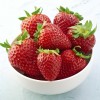 If you don’t shop for groceries often, you may want to buy food that will last until your next trip to the store. The following storage guidelines for perishable foods will help you decide how much food to buy when you visit the grocery. Keep in mind that safe storage times depend on the condition of the food when you purchase it and your refrigerator temperature and humidity. Check foods often for any signs of spoilage. This 2-page fact sheet was written by Linda B. Bobroff and Jennifer Hillan, and published by the UF Department of Family Youth and Community Sciences, October 2013.
If you don’t shop for groceries often, you may want to buy food that will last until your next trip to the store. The following storage guidelines for perishable foods will help you decide how much food to buy when you visit the grocery. Keep in mind that safe storage times depend on the condition of the food when you purchase it and your refrigerator temperature and humidity. Check foods often for any signs of spoilage. This 2-page fact sheet was written by Linda B. Bobroff and Jennifer Hillan, and published by the UF Department of Family Youth and Community Sciences, October 2013.
http://edis.ifas.ufl.edu/fy699
Fall Prevention: Lifestyle Factors and Fall Risk
 Many things can cause you to fall. The good news is that you can make some easy changes to decrease your risk of falling. This 2-page fact sheet was written by Linda B. Bobroff and Jennifer Hillan, and published by the UF Department of Family Youth and Community Sciences, October 2013.
Many things can cause you to fall. The good news is that you can make some easy changes to decrease your risk of falling. This 2-page fact sheet was written by Linda B. Bobroff and Jennifer Hillan, and published by the UF Department of Family Youth and Community Sciences, October 2013.
http://edis.ifas.ufl.edu/fy736
Food Safety: Does Your Kitchen Pass the Test?
 Older adults are at increased risk for foodborne illness. To help reduce your risk, follow safe food handling practices at home. How does your kitchen measure up? This 3-page fact sheet was written by Linda B. Bobroff and Jennifer Hillan, and published by the UF Department of Family Youth and Community Sciences, October 2013.
Older adults are at increased risk for foodborne illness. To help reduce your risk, follow safe food handling practices at home. How does your kitchen measure up? This 3-page fact sheet was written by Linda B. Bobroff and Jennifer Hillan, and published by the UF Department of Family Youth and Community Sciences, October 2013.
http://edis.ifas.ufl.edu/fy926
Seguridad Alimentaria: Juegatela seguro con los huevos
 Los huevos frescos pueden contener bacterias que podrían causar una enfermedad llamada salmonelosis. Esta enfermedad causada por alimentos provoca vómito y diarrea. Esta puede ser severa y hasta podría ser fatal para los adultos mayores. Reduzca el riesgo de contraer estas enfermedades causadas por sequir estas pautas. This 2-page fact sheet was written by Linda B. Bobroff y Jennifer Hillan, and published by the UF Department of Family Youth and Community Sciences, October 2013.
Los huevos frescos pueden contener bacterias que podrían causar una enfermedad llamada salmonelosis. Esta enfermedad causada por alimentos provoca vómito y diarrea. Esta puede ser severa y hasta podría ser fatal para los adultos mayores. Reduzca el riesgo de contraer estas enfermedades causadas por sequir estas pautas. This 2-page fact sheet was written by Linda B. Bobroff y Jennifer Hillan, and published by the UF Department of Family Youth and Community Sciences, October 2013.
http://edis.ifas.ufl.edu/fy194
Facts about Magnesium
 Many Americans don’t get enough magnesium in their diets. But most healthy people do not have signs of deficiency even if their intake is low because the body stores this mineral. However, people who abuse alcohol, take certain diuretic drugs, or have kidney disease may be at risk for magnesium deficiency. Long-lasting diarrhea or vomiting also can cause a deficiency. Older adults often do not get enough magnesium in their diets. This 2-page fact sheet was written by Linda B. Bobroff and Jennifer Hillan, and published by the UF Department of Family Youth and Community Sciences, July 2013.
Many Americans don’t get enough magnesium in their diets. But most healthy people do not have signs of deficiency even if their intake is low because the body stores this mineral. However, people who abuse alcohol, take certain diuretic drugs, or have kidney disease may be at risk for magnesium deficiency. Long-lasting diarrhea or vomiting also can cause a deficiency. Older adults often do not get enough magnesium in their diets. This 2-page fact sheet was written by Linda B. Bobroff and Jennifer Hillan, and published by the UF Department of Family Youth and Community Sciences, July 2013.
http://edis.ifas.ufl.edu/fy1088
Food Safety: Play it Safe with Eggs
 Fresh eggs may contain bacteria that can cause salmonellosis. This foodborne illness causes vomiting and diarrhea. It can be severe and even fatal in older adults. Reduce your risk for this foodborne illness by following these guidelines. This 1-page fact sheet was written by Linda B. Bobroff and Jennifer Hillan, and published by the UF Department of Family Youth and Community Sciences, June 2013.
Fresh eggs may contain bacteria that can cause salmonellosis. This foodborne illness causes vomiting and diarrhea. It can be severe and even fatal in older adults. Reduce your risk for this foodborne illness by following these guidelines. This 1-page fact sheet was written by Linda B. Bobroff and Jennifer Hillan, and published by the UF Department of Family Youth and Community Sciences, June 2013.
http://edis.ifas.ufl.edu/fy193
